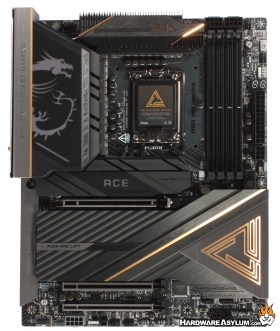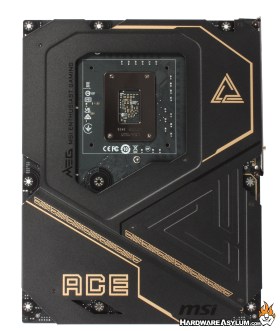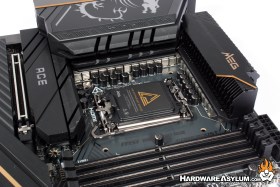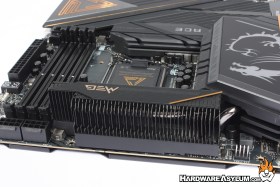MSI MEG Z890 ACE Motherboard Review
Author: Dennis GarciaBoard Layout and Features
The current trend in motherboard design is the reduction of expansion slots. This was triggered when Nivida stopped support or SLI around the time DirectX 12 took over. Of course, without the need to support multiple graphics cards the need for extra expansion slots was considered a waste of space.
Deep down I know we only need a single expansion slot but something at my core tells me that one is not enough.
Back plates have become the norm with modern motherboard designs and help to reinforce the PCB while also distributing excess heat from several motherboard components including the primary VRM.
From a design perspective I really like how both sides of the Z890 ACE feature the same graphical style and that the branding is carried through giving this product a very complete look and feel.
Sadly, with the backplate installed we can no longer see how the various expansion slots are wired up but, there are other ways to find that out.
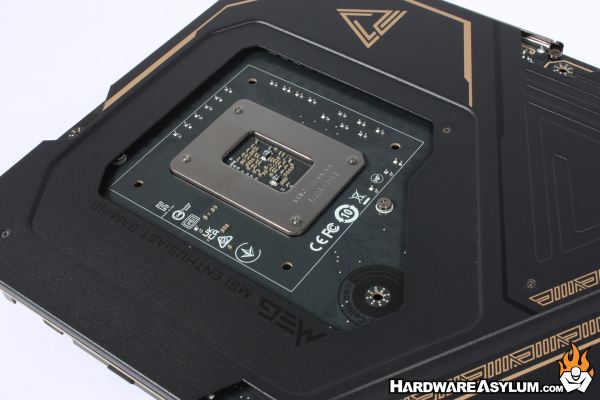
The large opening in the backplate is to allow access for heatsink installation. You will notice only one set of mounting holes and an otherwise extremely clean PCB design.
The VRM found on the MEG Z890 ACE is not for the faint of heart. Theare are a total of 28 power phases shown around the CPU socket consisting of 24+2+1+1 digital power phases.
Dual power connectors supply power creating a 110A Smart Power Stage to control 24 phases of CPU Vcore, DRPS and SPS, 2 phases for AS Power, a single phase for GT Power and the final phase for VNNAON power.
The dual power connectors are located in the upper right of the PCB near the memory sockets with plenty of room for cable access. One thing I find especially nice about the MSI MEG Z890 ACE is that the VRM cooler has been built using the FROZR Design which was made popular by the extremely efficient heatpipe cooling arrays found on high-end MSI Gaming and Overclocking graphics cards.
You can see the Wavy fin radiator and heatpipe array near the top of the motherboard connected to the extremely dense heatsink block adjacent to the primary motherboard I/O

